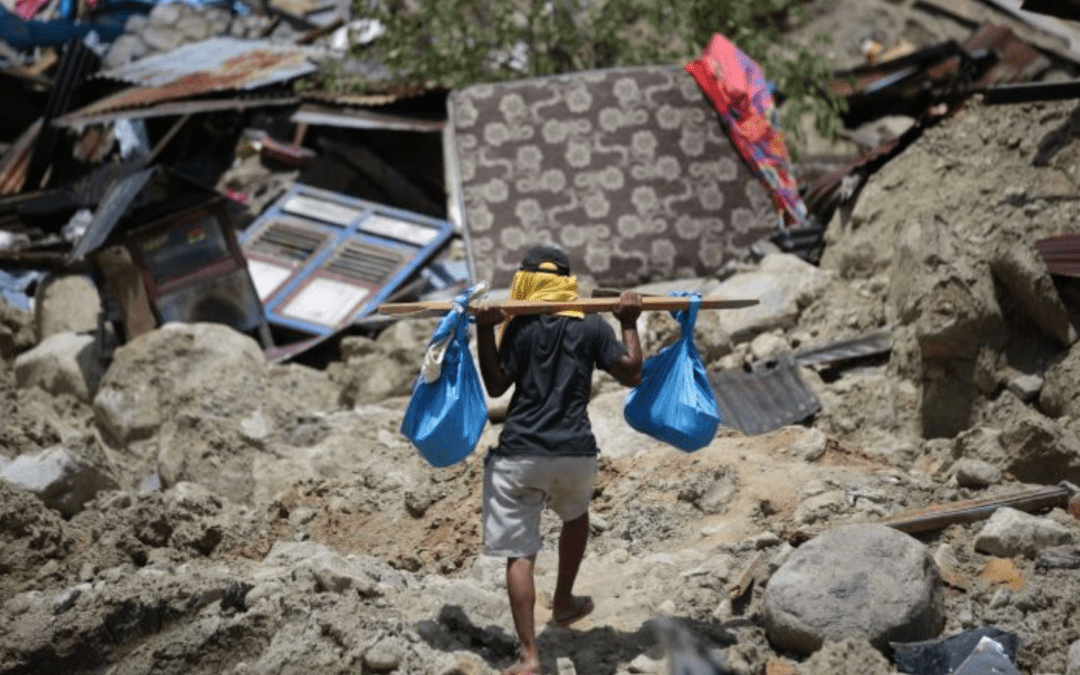ABC News
By Erwin Renaldi and Tracey Shelton
18 October 2018
Australia pledged $5.5 million in relief aid to Indonesia earlier this month in the wake of an earthquake and tsunami that killed more than 2,000 people and displaced millions more, but the pledge has sparked an online backlash over how Australian aid money to Indonesia is being spent.
Key points:
- Foreign aid accounts for around 0.8 per cent of the Australian Federal Budget
- Indonesia received $359 million in Australian aid in the last financial year
- Papua New Guinea is the top recipient of Australian aid
Some Australians criticised Indonesian military spending on Twitter and other social media, saying the relief money should be taken from the country’s military budget, and not provided by foreign aid.
Other posts said the money pledged should be used to benefit Australians.
“I bet Indonesia will receive our money before our farmers get [theirs],” one Facebook user posted.
“They were given 400 million dollars (YES $400 million), they straight away bought military helicopters just months ago,” said another post last week.
But a Lowy Institute Poll from this year showed that there was widespread misunderstanding among the public of how Australia’s foreign aid programs were spent around the world.
According to the Department of Foreign Affairs (DFAT), as one of Australia’s closest neighbours, Indonesia has been a top recipient of Australian aid, receiving $359 million in the last financial year.
Since 2013 — under former prime minister Tony Abbott’s leadership — the Australian Agency for International Development (AusAid) has stopped managing foreign aid allocations which were integrated back into DFAT.
According to DFAT’s most recent report on Indonesian aid spending, the key objectives of the aid include effective economic institutions and infrastructure, human development, and effective governance.
It added that “Australia’s development assistance represents less than 0.3 per cent of Indonesian Government revenue”.
But AidWatch, an international aid monitor based in Sydney, told the ABC that since DFAT took over from AusAid, the focus had shifted from development to investment.
“It is principally directed to private growth and economic growth in Indonesia to benefit Australian companies that export to Indonesia or produce in Indonesia,” said AidWatch chair James Goodman, adding that it was also used as a means of cementing diplomatic relations.
“So aid is very much now distributed in the national interest of Australia.”
Mr Goodman said Australian aid assistance missed the point, because the key problem in Indonesia was not economic growth, but rather inequality.
“The Australian people generally support aid for humanitarian purposes or aid to address poverty or aid to address human need,” he said.
“Increasingly the Australian Government has said Australian aid is not for any of those things primarily … [rather it] is to advance Australia’s national interest.
“When people were told that, they get quite sceptical about the aid program.”
Mr Goodman, who is also a lecturer at the University of Technology Sydney, said Australian aid was also focused on strategic interests such as managing illegal refugees and offshore detention facilities as well as “diplomatic or economic diplomacy” including trade deals.
Australia’s aid budget has been significantly reduced in recent years.
Indonesia became the top recipient of Australian foreign aid following the 2004 Tsunami that hit Indian Ocean nations on Boxing Day, which claimed more than 230,000 lives, including more than half who were killed in Indonesia.
Mr Goodman said public support for Australia’s national aid program had been declining for some years — particularly Indonesia’s share — because the public perceived the country as a terrorist threat.
n the 2015 – 2016 financial year, Indonesian aid was scaled back by some 40 per cent, leaving Papua New Guinea to reclaim its place at the top of the recipient list.
In June this year, the Lowy Institute polled the Australian public to find out what percentage of the Federal Budget they thought was allocated to foreign aid each year.
While the majority estimated about 14 per cent, it was actually much lower at around 0.8 per cent.
Mr Goodman said the additional aid Australia announced earlier this month for earthquake-tsunami relief was not a substantial amount in view of the situation, but was to show Australia was concerned about one of its closest neighbours.
“I personally have no idea where the $5.5 million is going,” he said, adding that Australia has one of the “least transparent” overseas aid programs.
“They announce several things on the website, cherry picking, telling you only about exciting things that they think of, or good news stories,” he said, adding that when it came to where the money really goes, “we simply just don’t know”.
When asked for a response as to where the aid money to Indonesia would be going, DFAT initially missed the deadline for publish, but later told the ABC in an email that a revised figure of $10.25 million had been committed to the Sulawesi response and that a breakdown could be viewed on its Crisis Hub website that is updated in real-time.

